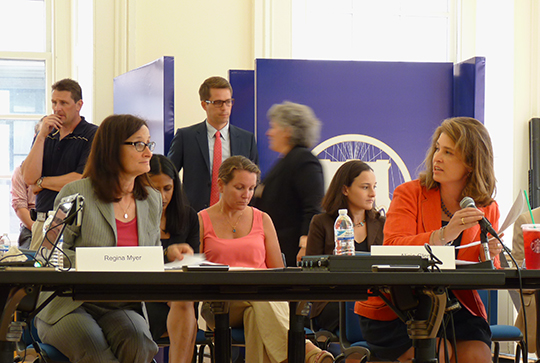Brooklyn Bridge Park board to move forward with Pier 6 development
Borough Hall meeting draws large anti-tower crowd

Brooklyn Bridge Park board. Photo by Mary Frost
A passionate crowd packed Wednesday’s Brooklyn Bridge Park Corporation board meeting at Borough Hall, despite it being held at 3 p.m. on a work day.
Many speakers called for a halt to the construction of two luxury towers inside the park at Pier 6, at the foot of Atlantic Avenue, until further study could be carried out.
The park’s Community Advisory Council (CAC) had put forward two resolutions to put the development on pause while revisiting the park’s 10-year-old General Project Plan (GPP).

Brooklyn Heights
View MoreRead the Brooklyn Height's Press and Cobble Hill News. Find out more about Brooklyn Height's History here.